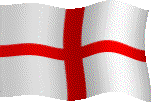or
Cilmin-Droed-Dhu

Continued
Through battle, murder and intrigue the line of English kings wound its bloody way from days of Cilmin-Troed-Dhu down to the next six centuries to a man named Henry Tudor whose accession to the throne hung by a slender thread indeed. His claim was based upon the fact that he was the grandson John of Gaunt, who, in his day, was head of the house of Lancaster, which, together with the House of York, claimed accession to the throne. John of Gaunt's career had been a stormy one politically and matrimonially. Having contracted two marriages of convenience, at the death of his second wife, he married his mistress, Catherine Swinford, mother of his five children to whom he gave the name Beaufort and whom the king legitimized, although this act was later revoked by parliament. The death of Henry VI and his son left the House of York without an heir but the Lancasters survived in Henry Tudor, son of Margaret Beaufort, daughter of John of Gaunt and Catherine Swinford. She had married well, choosing Edmund Tudor, Duke of Richmond and son Owen Tudor, a Welsh squire of great prominence, whose wife was Catherine of France, widow of HenryV. Henry, son of Margaret Beaufort and Edmund Tudor, was less than a year old when his father died. For years he was kept in Brittany, half guest and half prisoner. His claim of blood was a disputable one but the Battle of Bosworth and treason finally gave him the throne.
The stigma attached to the Beaufort name may have inspired Henry Tudor to offset the tainted blood of the House of Lancaster by the honorable ancestry of the Welsh Tudors. A commission was sent to Wales, assisted by Welshmen of letters in their examination of ancient manuscripts carried into Wales in the 7th century when the Britons were driven out of a large part of England. These men drew up the exact pedigree of Owen Tudor which they presented to his grandson now King Henry VII, who must have been gratified with a continuos and authentic line back to Coel Godebec, King of Britain about 300 A.D. One of the links in this line was none other than Mervyn Vryshe, King of the Isle of Man, King of Wales and uncle of Cilmin-Troed-Dhu. Mervyns's son Roderick was the ancestor of Henry VII. In this interesting manner the origin of Cilmin-Troed-Dhu was brought to light although it shows no blood bond with the Tudor family as is sometimes claimed.
After a rule of twenty-four years, Henry VII passed on, leaving his throne to Henry VIII who inherited his father's friendly feeling for the Welsh people. He invited many Welshmen to his court, placing them in his retinue and it is not strange that we find the descendants of Cilmin in Henry's court 700 years after this valiant Knight laid down his arms forever.
Seven centuries rolled over Glynllifon since the days of its gallant chieftain Cilmin-Troed-Dhu, and we find his descendants still in their ancestral home. However, many changes had occurred and others were soon to come. In the British Museum, Harleian Manuscript No. 1960 gives a list of the descendants of Cilmin-Troed-Dhu, containing many other names than those recently published. There were many younger sons who doubtless carried their tribal name into England. Early English records during this period tell of Gilmans appearing in various localities in England. Their arms were a man's leg coupled at the thigh, denoting unmistakably their origin as descendants of Cilmin-Troed-Dhu of Wales. They were the nucleus of several branches of the Gilman family in England. We shall refer to them as our English cousins as they were undoubtedly related to our own ancestors, the Norfolk Gilmans.

My Email
![]()
Created with Microsoft FrontPage98